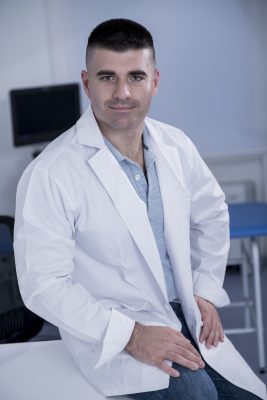Peripherial artery disease affects 200 million people worldwide and its severity ranges from limb pain causing difficulty in walking to limb-threatening condition with rest pain or ulcer. Caused by a buildup of fat and calcium deposits on artery walls, over time, it can lead to restricted blood flow and tissue damage (ulcers) – both of which threaten the viability of the leg. In its most severe stage, the risk of amputation is high.
 To restore blood flow to the affected limb, surgeons transplant a healthy blood vessel that diverts blood around narrowed or blocked parts. “Often, this is the only way to salvage the limb. Ideally, tissue from the patient’s body – autologous veins – were to be used, but in around 15%-45% of the cases they are not available as a result of underlying diseases,” – says Dávid Garbaisz, vascular surgeon at Semmelweis University’s Városmajor Heart and Vascular Center in Budapest, which also operates one of the largest cardiovascular allograft banks in the region.
To restore blood flow to the affected limb, surgeons transplant a healthy blood vessel that diverts blood around narrowed or blocked parts. “Often, this is the only way to salvage the limb. Ideally, tissue from the patient’s body – autologous veins – were to be used, but in around 15%-45% of the cases they are not available as a result of underlying diseases,” – says Dávid Garbaisz, vascular surgeon at Semmelweis University’s Városmajor Heart and Vascular Center in Budapest, which also operates one of the largest cardiovascular allograft banks in the region.
If that is not an option, for (the) most severe cases, surgeons use allografts/homografts – veins and arteries taken from organ donors. In most cases, great saphenous vein (GSV) and/or superficial femoral artery (SFA) are explanted during the donation. After collection, these are cryopreserved in a bank and are delivered to the hospital on request.
The study analyzed the outcomes of infrainguinal allograft bypass surgery in patients with chronic limb-threatening ischemia (CLTI) between January 2007 and December 2017. During the 11-year period, 134 infrainguinal allograft bypasses were performed for CLTI. Great saphenous vein (GSV) was implanted in 100 cases, superficial femoral artery (SFA) was implanted in 34 cases.
We are the first to have compared the effectiveness of venous and arterial grafts implanted in the thigh on the same group of patients. What we found is that arterial allografts ‘performed’ better in the long run as they remained open longer
– says Garbaisz, first author of the study. The reasons may lie in the characteristics of the arteries. Arteries have larger vessel diameter, they have stronger walls, are more resistant therefore structurally more suitable than venous grafts, he explains.
Arteriosclerosis affects roughly 200 million people worldwide. The incidence of patients in the final stage of arteriosclerosis is 500-1,000 new cases/ million people per year – one third of the patients are expected to develop the final stage. The annual mortality of patients with arteriosclerosis in the final stage can reach 20%.
Both primary and secondary patency of SFA allograft implanted in below-knee position were significantly higher than GSV bypasses. Limb salvage rate at 1, 3 and 5 years following surgery was 74%, 64% and 62% respectively. Long-term survival was 53% at 5 years.
Since few data are available regarding the use of allograft and there is no commonly accepted guideline, the new results may help vascular surgeons in decision-making.
Dr. Garbaisz says:
The use of allografts in patients with CLTI – especially arterial allografts – seems to be a suitable method for revascularization in the absence of an own blood vessel.
“With technology improving, we have many opportunities for domestic and international cooperation,” – he adds.
Photo: Attila Kovacs – Semmelweis University, Cover photo (illustration): iStock by Getty Images – photocheaper


